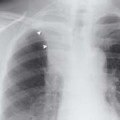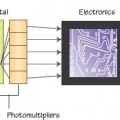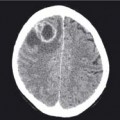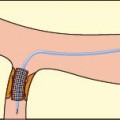Radiation exposure
Radiation does not stimulate any of the human senses and therefore exposure is silent. The consequences of radiation exposure may be irreversible and even lethal. The adverse effects of radiation exposure include:
- Deterministic effects – these are directly related to the dose of radiation to which the individual is exposed and can vary from simple erythema to significant cell damage and death. Beyond certain threshold levels, cells that are actively engaged in the cell cycle are targeted, resulting typically in bone marrow suppression and gastrointestinal side effects.
- Stochastic effects – these are predicted from the probability of occurrence. Their severity however is not dose related and hence there is no threshold level. The majority of carcinogenic and genetic effects of radiation exposure for medical purposes fall into this category.
Radiation protection
The principles of radiation protection are:
- Justification – the purpose for conducting the examination should justify the radiation exposure.
- Optimisation – the dose should be as low as reasonably achievable (ALARA) to ensure an adequate examination.
- Dose limitation – radiographers should record the dose given to each patient to help ensure dose limitation.
Radiation legislation
Protecting patients and medical staff from the harmful effects of radiation is ensured by UK legislation. Imaging Departments and other areas using ionising radiation are regularly investigated and audited to maintain stringent safe practice.
Ionising Radiation Regulations 1999 (IRR99)
The Health and Safety Executive (HSE) is responsible for IRR99. The aim of this legislation is to protect the employee and general public from ionising radiation in the workplace. IRR99 defines the responsibilities of the:
- Employer – to perform risk assessment, authorise practices and liaise with the HSE.
- Employee – to work within the defined practices, report failures, look after their own equipment and not knowingly overexpose themselves or other employees.
Dose limits for employees are defined together with the designation of controlled and supervised areas which are determined by the level of predicted exposure.
Ionising Radiation (Medical Exposure) Regulations 2000 – IR(ME)R
The Department of Health is responsible for IR(ME)R. The aim of this legislation is to protect patients undergoing medical examinations and treatments with ionising radiation. IR(ME)R defines various roles and responsibilities.
- Employer (e.g. the hospital) – must provide a framework for employees.
- Referrer (e.g. the referring clinician) – must provide adequate and correct information to allow justification of the examination.
- Practitioner (usually the radiologist) – decides the appropriate imaging and justifies the exposure.
- Operator (the radiologist or radiographer) – authorises and performs the exposure with dose optimisation.
Stay updated, free articles. Join our Telegram channel

Full access? Get Clinical Tree








